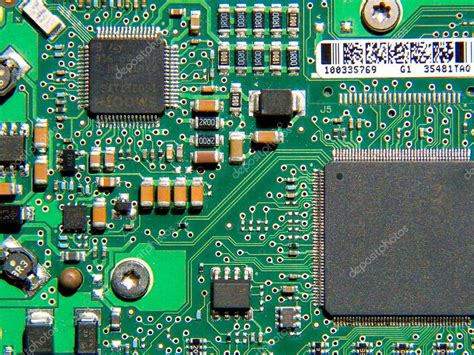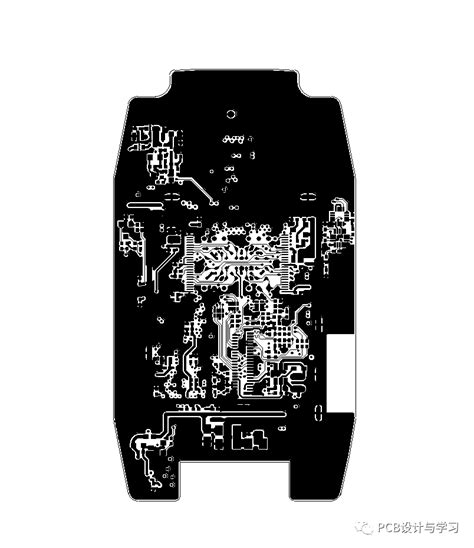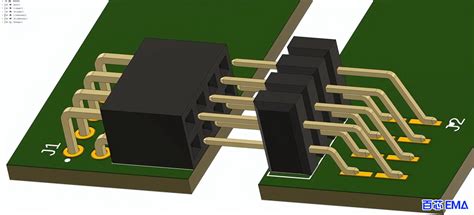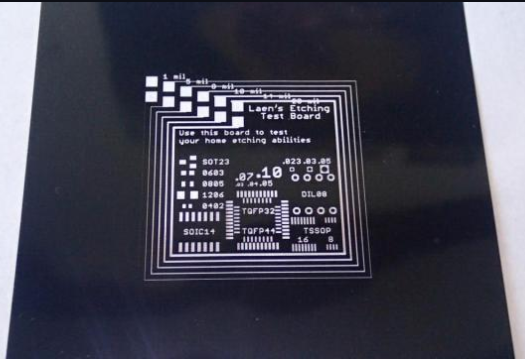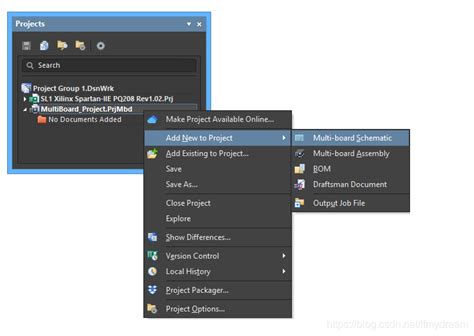Mastering Custom Circuit Board Printing: Elevate Your Electronics Project Today!
Key Takeaways
When embarking on your journey with custom circuit board printing, it is essential to understand the intricacies of PCB manufacturing and the various factors that can affect your projects. Firstly, evaluating the pcb manufacturing cost is vital; it will help you determine the feasibility of your designs and streamline your budget. Engaging with reputable pcb manufacturing companies ensures that you receive high-quality materials and services that align with your specifications. Determine what you need for your projects, as some may require advanced capabilities that only specialized pcb manufacturing businesses can offer. You should prioritize quality over cost to guarantee durability and performance, as inferior materials can lead to failures in functionality and efficiency. Keep abreast of trends in PCB technology, as adopting the latest advancements can significantly enhance the capabilities of your designs. By focusing on these key aspects, you will unlock the potential for innovative solutions that elevate your electronics endeavors to new heights.
Introduction to Custom Circuit Board Printing
Custom circuit board printing is an essential component in the realm of electronics, enabling you to bring your innovative ideas to life. By understanding the specifics of pcb manufacturing, you can effectively produce high-quality printed circuit boards (PCBs) that meet your project’s unique requirements. The process often involves collaborating with various pcb manufacturing companies that specialize in delivering precision-engineered boards. They use advanced materials and technologies that not only reduce the pcb manufacturing cost but also enhance the overall performance of your designs.
In today’s competitive landscape, understanding how different pcb manufacturing businesses operate can give you a significant edge. You’ll learn which companies provide the best services tailored to your needs and how to optimize your selection based on factors such as turnaround time, quality assurance, and cost-effectiveness. This knowledge allows you to navigate through options confidently, ensuring that your project achieves its full potential without unnecessary expenses or delays.
Here’s a table outlining key factors when choosing a pcb manufacturing business:
| Factor | Considerations | Impact on Project |
|---|---|---|
| Cost | Evaluate pricing models | Affects budget and timeline |
| Turnaround Time | Standard vs. expedited options | Influences delivery deadlines |
| Quality Assurance | Certifications and testing standards | Ensures reliability of PCBs |
| Customer Support | Availability of technical assistance | Aids in troubleshooting |
By equipping yourself with this information and seeking expert guidance, you can effectively elevate your electronics project today through the art of custom circuit board printing.
Understanding the PCB Fabrication Process
The PCB manufacturing process involves several crucial stages that transform your designs into functional circuit boards. First, you’ll begin with the design phase, where your layout is meticulously crafted using specialized software. This software allows you to define the dimensions, layer stacks, and pathways for electrical connections. Once your design is finalized, it undergoes a series of steps including etching, drilling, and solder masking that are essential for achieving precision in board construction.
Understanding the various PCB manufacturing companies can help you select a partner that fits your project’s budget and timeline. Each company may offer different methods and capabilities, which can significantly impact the PCB manufacturing cost of your project. Evaluation of these factors is essential for effective cost management and quality assurance in your electronics projects.
“The key to efficient PCB manufacturing lies in a balanced approach between quality and cost,” suggests industry experts. For entrepreneurs or businesses looking to embark on a journey in this field, understanding how to streamline the fabrication process can set you apart in the competitive landscape of the PCB manufacturing business. Embrace these insights to not only enhance your prototypes but also drive innovation within your projects, ultimately leading to successful outcomes that meet or exceed expectations.
Essential Materials for High-Quality Circuit Boards
When embarking on the journey of custom circuit board printing, understanding the essential materials is crucial for achieving high-quality results. The backbone of any successful PCB lies in its materials, which determine not only performance but also reliability. The most common substrate used in pcb manufacturing is FR-4, a fiberglass material that offers excellent mechanical and thermal properties. Additionally, copper foil acts as the conductive layer, crucial for signal transfer. When selecting materials, consider pcb manufacturing companies that prioritize quality sourcing to minimize issues related to material defects and inconsistent performance.
Aside from FR-4, you might also explore specialized substrates such as polyimide or ceramic options for high-frequency applications. These materials are generally more expensive but can significantly improve the performance of your designs. Keep in mind that the pcb manufacturing cost can vary depending on your choice of substrates and components.
Integrating the right solder mask and silkscreen is equally important; these elements protect your PCB and improve both its longevity and usability. By investing in quality materials from reputable pcb manufacturing businesses, you can ensure that your project not only meets design specifications but also adheres to industry standards. Carefully selecting these essential components sets the foundation for innovative designs and higher functionality in your electronics projects, ultimately aiding you in mastering custom circuit board printing.
Techniques for Precision Engineering in PCB Design
Achieving precision engineering in PCB design requires a meticulous approach and a deep understanding of the intricacies involved in the pcb manufacturing process. It begins with selecting the right materials that not only cater to your project’s specifications but also align with your budget. When working with pcb manufacturing companies, you can leverage their expertise to refine your designs, ensuring that every trace and pad meets the highest standards of accuracy. The choice of materials directly influences the pcb manufacturing cost, making it imperative to have a clear view of how different components impact the overall project expenses.
Utilizing advanced software tools can significantly enhance your design efficiency, allowing you to simulate and analyze circuits before proceeding to production. This step is crucial, as it helps identify potential issues early in the design phase, thereby reducing costly errors during production. Furthermore, staying updated with industry trends ensures that you’re well-versed in emerging technologies that can optimize both performance and reliability of your custom PCBs.
As you navigate through your pcb manufacturing business, focus on refining these techniques to improve throughput and reduce lead times. Collaborating closely with manufacturers can provide insights into best practices, thus enabling you to elevate the quality of your projects while keeping costs manageable. Ultimately, emphasizing precision engineering creates a solid foundation for innovative and successful electronics ventures.
Advancements in Technology for Custom PCBs
The landscape of pcb manufacturing has seen remarkable advancements, significantly enhancing the capabilities and efficiency of custom circuit board printing. Today, you can leverage cutting-edge technologies such as automated assembly processes and sophisticated design software that streamline the entire PCB manufacturing workflow. These technologies not only reduce the pcb manufacturing cost but also facilitate the production of complex designs that were once considered impractical. As you explore various pcb manufacturing companies, look for those that incorporate these innovations to deliver high-quality, precision-engineered boards tailored to your specifications. Additionally, emerging materials and techniques, such as flexible PCBs and multi-layer options, allow for greater creativity in your projects. By tapping into these advancements, you can elevate your electronics endeavors and ensure optimal functionality while keeping production costs manageable. For more insights into this evolving field, consider resources available through Andwin PCB. Embracing these technological improvements in your pcb manufacturing business will undoubtedly position you for success in a competitive market.
Tips for Optimizing Your PCB Prototyping Workflow
To streamline your PCB manufacturing workflow, it is essential to understand the different phases involved in the process. Start by meticulously planning your design; utilizing advanced tools for schematic capture and layout can significantly reduce errors. Collaborate with PCB manufacturing companies that have a reputation for quality to ensure that your designs are accurately translated into physical boards. Pay attention to details such as trace widths, clearances, and component placements, as these factors can influence both the pcb manufacturing cost and the overall effectiveness of your design. Furthermore, employing design rules check (DRC) during software simulations can prevent costly mistakes later on. Once your prototype is ready for production, leverage rapid prototyping services offered by many pcb manufacturing businesses to expedite testing phases. By integrating feedback loops after each iteration, you can refine your designs effectively while keeping production costs manageable. Remember, being proactive in addressing potential challenges—such as ensuring material compatibility or managing production timelines—can greatly enhance your PCB prototyping experience and improve project outcomes.
Common Challenges and Solutions in Circuit Board Printing
When embarking on your journey with custom circuit board printing, it’s essential to acknowledge the potential challenges you may face along the way. One primary concern is the pcb manufacturing cost, which can vary significantly depending on several factors such as complexity, materials, and the specific pcb manufacturing companies you choose to collaborate with. As a project initiator, understanding these variables can help you budget effectively. Another common challenge is achieving precision in your designs. Ensuring that your layout adheres strictly to specifications requires meticulous attention and often necessitates advanced design software. Moreover, the choice of materials plays a crucial role; subpar components can lead to failures that compromise overall functionality. To combat these issues, it’s advisable to engage with reputable pcb manufacturing companies offering high-quality materials and standardization in production processes.
Furthermore, time constraints often pose a significant hurdle in pcb manufacturing business endeavors. Streamlining your workflow through effective project management tools can assist in mitigating delays while enhancing communication with your manufacturing partners. In instances where prototypes don’t work as expected, iterative testing and adjustments are vital. By maintaining open lines of communication with your suppliers and leveraging their expertise, you can identify solutions quickly, thus saving time and minimizing costs associated with revisions. Ultimately, facing these challenges head-on equips you to refine your processes and elevate the performance of your electronics projects through effective custom circuit board printing strategies.
Case Studies: Successful Electronics Projects Using Custom PCBs
Exploring successful electronics projects that utilize custom PCBs can provide invaluable insights into their practical applications and benefits. One notable case involved a small tech startup aiming to innovate in the realm of wearable health devices. By partnering with pcb manufacturing companies, they were able to create a custom circuit board tailored specifically for their device’s unique needs. This collaboration not only optimized the functionality of their product but also significantly reduced the pcb manufacturing cost compared to off-the-shelf options. Another successful endeavor was a university team developing a drone prototype for agricultural monitoring. Their choice to engage with reliable pcb manufacturing businesses allowed them to iterate quickly, producing multiple prototypes with varying specifications that enhanced their design’s performance and reliability. These examples underscore how understanding the pcb manufacturing process can lead to engaging, practical solutions and elevate your projects, giving you a competitive edge in the ever-evolving electronics landscape. By leveraging these real-world successes, you can gain confidence in navigating the complexities of custom circuit board printing, ultimately enabling you to achieve your project’s goals with greater precision and efficacy.
Conclusion
In summary, mastering custom circuit board printing can significantly enhance not only your individual projects but also your understanding of the PCB manufacturing landscape. By exploring various aspects of pcb manufacturing, from choosing the right materials to familiarizing yourself with the intricacies of the pcb manufacturing process, you can develop high-quality, precision-engineered PCBs that meet your specific needs. Engaging with reputable pcb manufacturing companies will also provide insight into industry standards and best practices, enhancing your projects even further. Understanding the implications of pcb manufacturing cost is crucial; effective planning and budgeting will empower you to make informed decisions that align with your project’s goals. If you’re considering starting a pcb manufacturing business, being aware of current trends and advancements will give you a competitive edge. Embrace these concepts, and you will find yourself elevating your electronics projects to a level that not only meets expectations but also drives innovation in your field.
FAQs
When embarking on your journey in pcb manufacturing, it’s essential to recognize the diverse aspects that influence your project. You may wonder about the differences between pcb manufacturing companies and what sets them apart in terms of quality and service. To begin, always consider the pcb manufacturing cost associated with different providers; varying expenses can directly affect your project’s budget. Many factors, such as material selection and complexity of design, play a significant role in determining this cost.
If you are contemplating starting a pcb manufacturing business, understanding these facets is crucial for success. It’s advisable to thoroughly research potential suppliers and their reputation within the industry. Asking specific questions about their fabrication processes, quality control measures, and turnaround times can provide insight into which company may best serve your needs. By gaining a comprehensive grasp of these elements, you can make informed decisions that advance your electronics project and ensure optimal performance from your final product.

